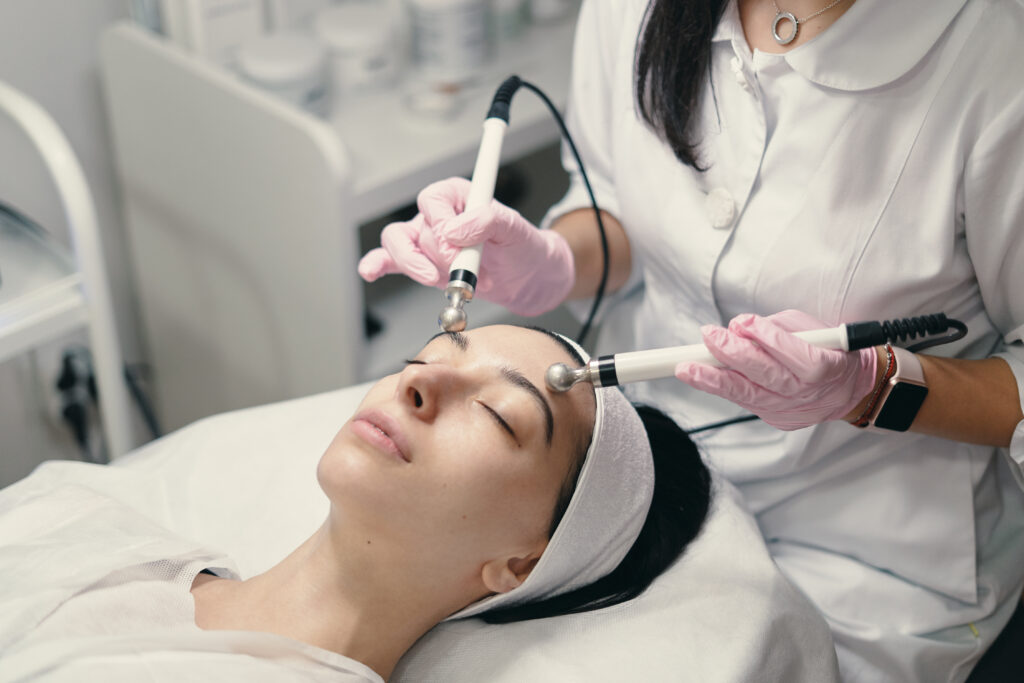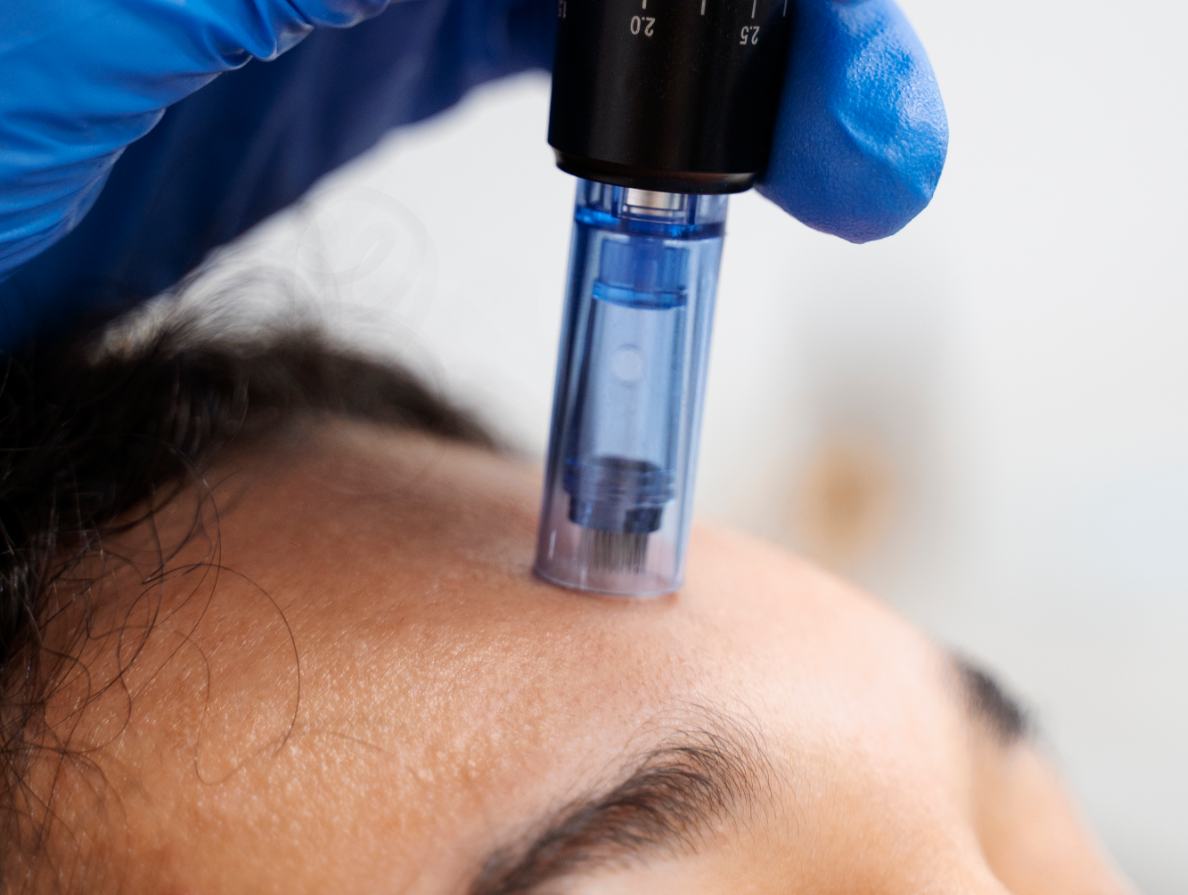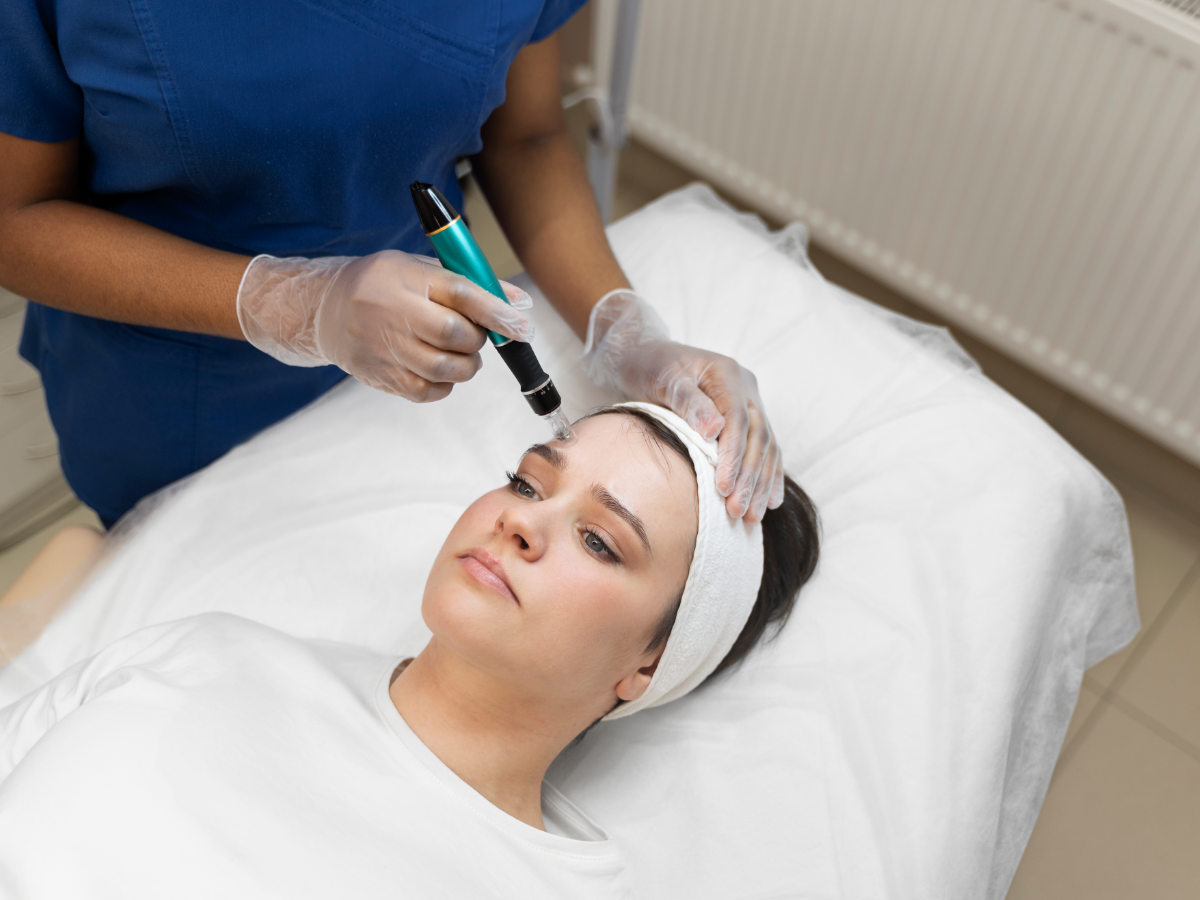What is microneedling?
Microneedling is a minimally invasive procedure for your skin. Your healthcare provider uses thin needles to make tiny holes in the top layer of your skin. The damage helps stimulate your skin’s healing process, so it produces more collagen and elastin. These proteins keep your skin firm and smooth.

Most people get microneedling on their face, but you can also get it on your legs, back, neck or other areas where you notice damaged or aging skin. You’ll probably need multiple treatments to achieve your desired results.
Microneedling vs. microdermabrasion: What’s the difference?
Microneedling and microdermabrasion are both procedures to improve the look and texture of your skin. But microdermabrasion doesn’t use needles. Instead, a healthcare provider uses a device with a rough edge, like sandpaper, to exfoliate the uppermost layer of your skin. Microneedling goes deeper into your skin than microdermabrasion, so it might work better for problems beneath the surface, such as acne scars.



Who gets microneedling?
Microneedling has cosmetic and medical uses. You might consider microneedling if you’re concerned about:
- Enlarged pores.
- Fine lines or wrinkles.
- Loose or crepey (thin and wrinkled) skin.
- Mild scars, especially those from acne or burns.
- Skin discoloration or uneven skin tone.
- Stretch marks.
The procedure can also help people who have medical conditions such as:
- Alopecia areata (hair loss due to an autoimmune disease).
- Hyperhidrosis (excessive sweating).
In some cases, healthcare providers use microneedling to deliver drugs or vaccines directly into your skin. The microneedles might be part of a patch that people apply themselves instead of going to their healthcare provider for shots.
Who shouldn’t have microneedling?
Talk to your healthcare provider before getting microneedling if you have:
- Acne or are taking medication for acne.
- Blood disorders or are on anticoagulants (drugs that prevent blood clots).
- Cancer and are receiving chemotherapy or radiation therapy.
- Frequent skin rashes (contact dermatitis) or cold sores.
- Keloidal tendency (your skin forms hard, raised scars).
- Moles, freckles, skin tags or other growths that change in size or shape or bleed.
- Skin conditions such as eczema or psoriasis.
